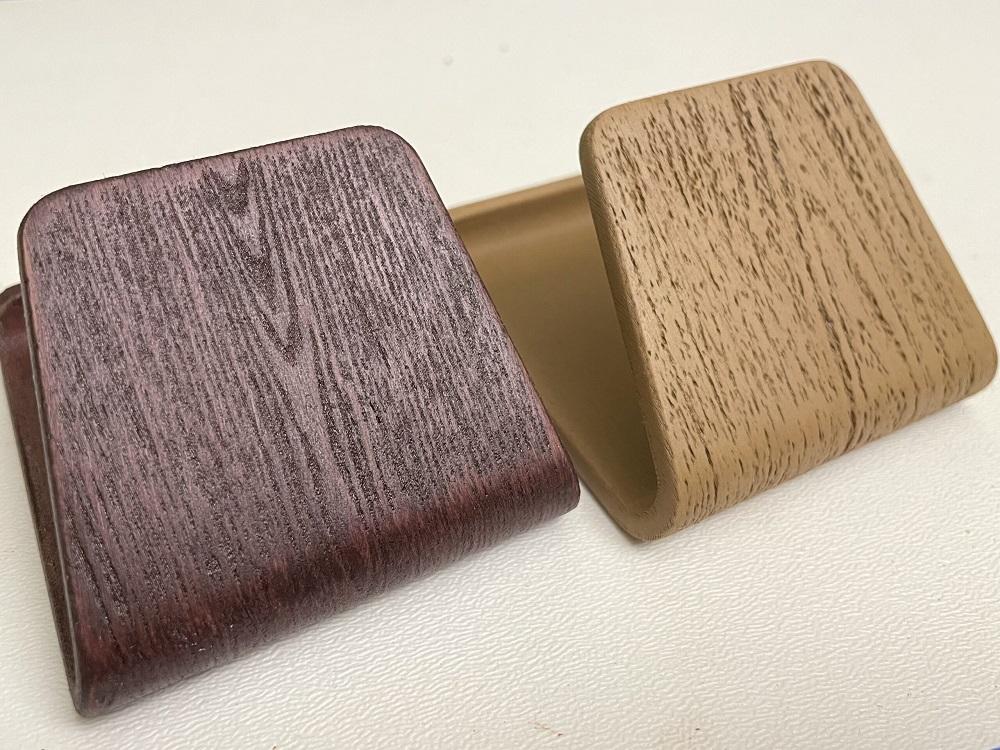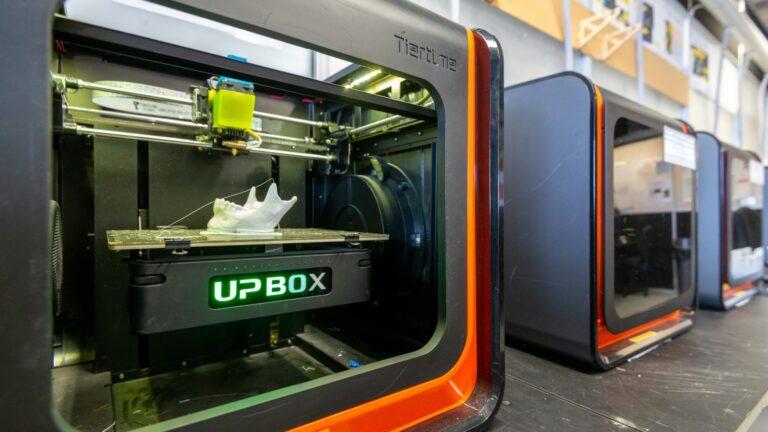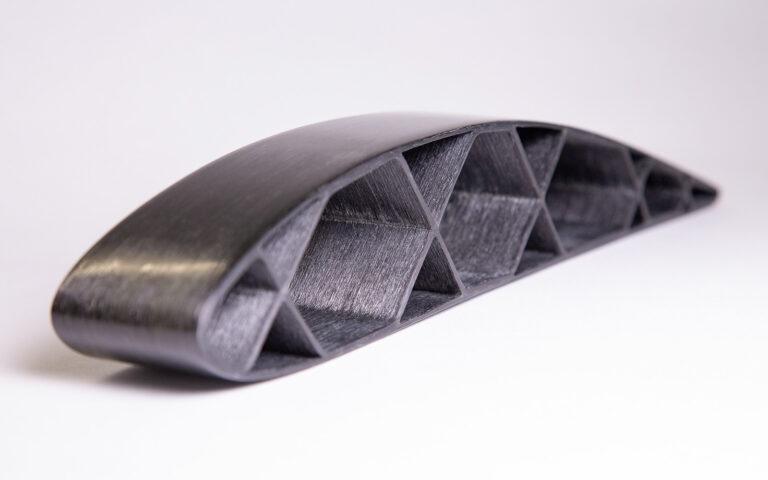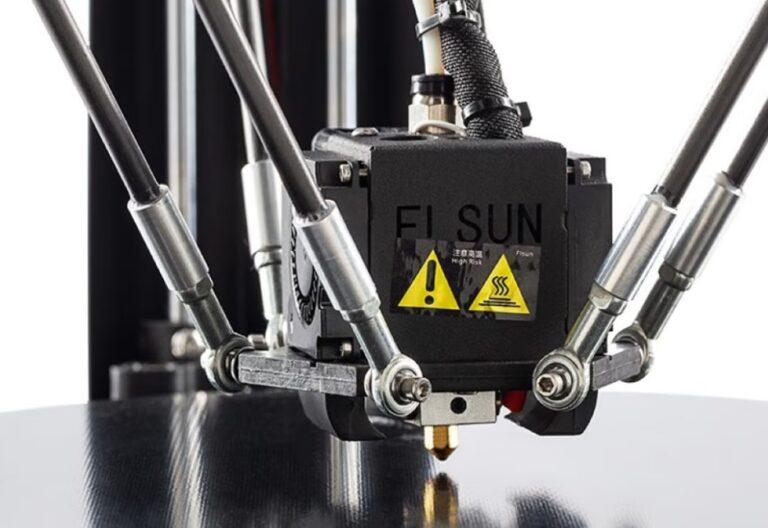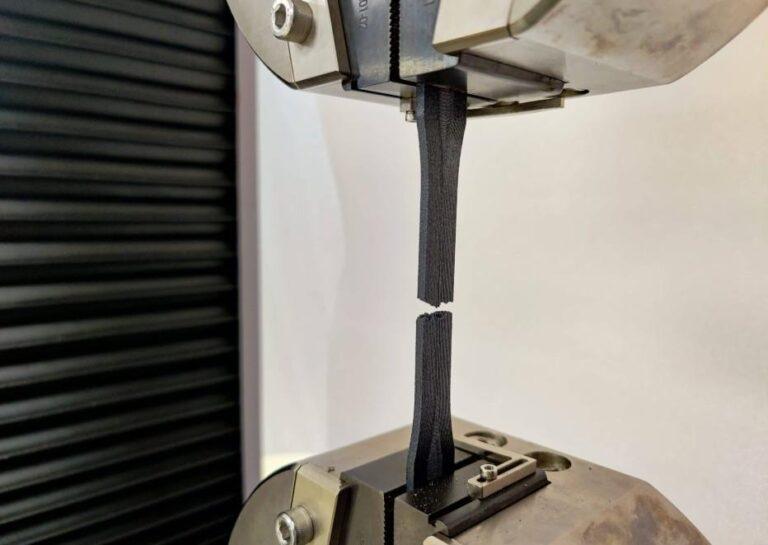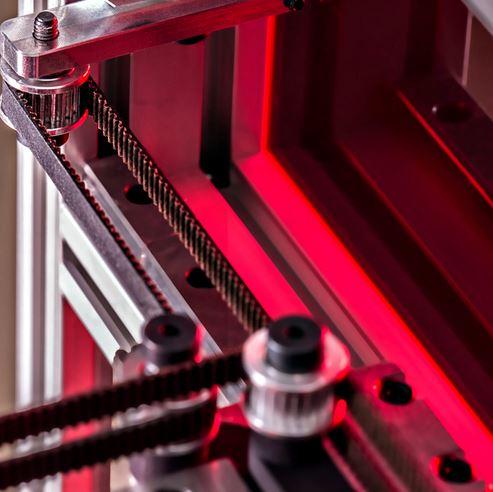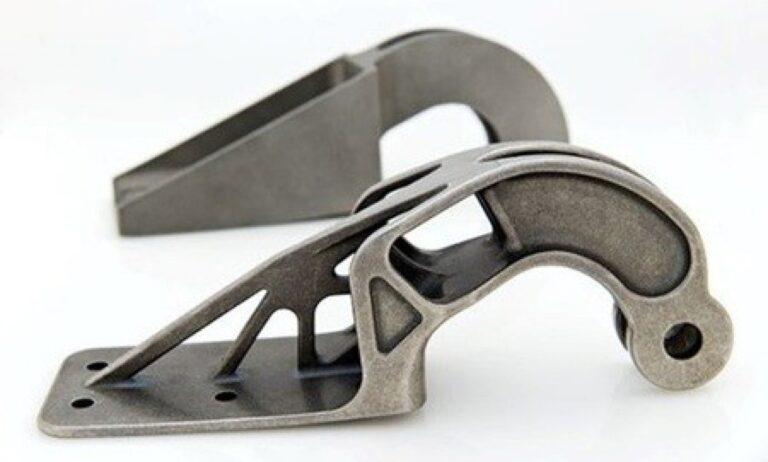Introduction
Welcome to the realm of wood filament magic, where age-old materials and cutting-edge technology combine to produce fascinating 3D prints that feature real wood. Wood filament is popular for adding natural elements to projects. It offers a sustainable and eco-friendly solution. This guide explores its composition, features, and uses. Gain the knowledge and pointers to incorporate wood filament into your designs. This guide is suitable for all levels of 3D printing expertise. Whether you’re a beginner or experienced, this guide can help. Add the magic of wood filament to your creations. Let’s go out on this quest to realize the full potential of 3D printing with wood.
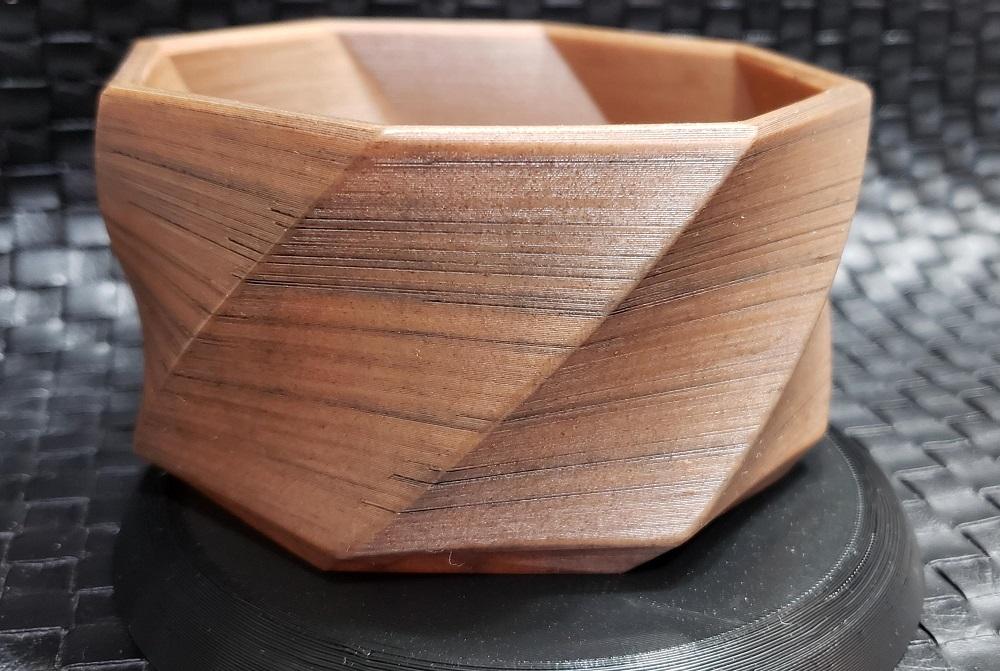
Brief overview of wood filament
The beauty and allure of real wood are combined with the adaptability and sturdiness of thermoplastics in Wood Filament, a special 3D printing material. Wood filament delivers a realistic wood-like appearance and feels while retaining the ease of printing seen in conventional materials. It is made by combining small wood particles with a polymer foundation, commonly PLA or ABS. 3D printers can create detailed, wood-like items. This has captured the imagination of printing enthusiasts worldwide. Wood filament is a popular choice for its eco-friendliness. It uses reclaimed wood and biodegradable plastic. Wood filament offers a natural, visually appealing finish.
The growing popularity of wood-infused 3D printing
Wood-infused 3D printing is popular due to its aesthetic appeal, sustainability, and adaptability. Wood filament is eco-friendly and gaining popularity among those seeking to reduce their environmental impact. Artists, designers, and DIY enthusiasts use wood filament to replicate the appearance and texture of real wood. Wood-infused 3D printing has numerous uses, from beautiful sculptures to practical home products. The wood filament community is vibrant and creative, with enthusiasts continuing to explore new possibilities.
Importance of eco-friendly and sustainable printing materials
The need for sustainable solutions drives the quest for eco-friendly printing materials. Wood filament combines renewable wood with biodegradable polymers. This reduces the overall environmental impact of 3D printing. Using eco-friendly materials encourages responsible consumption and waste reduction. It also promotes innovation in sustainable product design. Embracing wood filament can actively contribute to a greener future. It fosters an appreciation for our planet and its resources. This unique fusion of environmental consciousness and technology shows the potential of sustainable materials. They can revolutionize industries and shape a more sustainable world.
The Basics of Wood Filament
Wood filament blends natural wood and thermoplastic materials for a unique 3D printing experience. It’s made of finely ground wood particles and a biodegradable polymer base, with the best of both worlds. With wood filament, prints closely resemble traditional wooden products with a natural texture. Despite its organic appeal, it’s easy to print and versatile like other thermoplastics. Wood filament is perfect for eco-friendly and sustainable practices in additive manufacturing. It opens up new possibilities in the world of 3D printing while remaining committed to sustainable practices.
What is wood filament made of?
Wood filament is a composite material made of a thermoplastic foundation and finely crushed wood particles. The thermoplastic foundation is often a biodegradable polymer like polylactic acid (PLA). Wood particles typically make up 20-40% of the final product. The wood particles can come from various sources, including recycled wood, sawdust, and wood byproducts. The thermoplastic foundation, which makes up the remaining 60 to 80 percent, offers the bonding qualities required for 3D printing.
Different types of wood can be used to create wood filament. Each wood has unique qualities like color, grain pattern, and fragrance. Common woods used for filament include bamboo, birch, cedar, cherry, coconut, ebony, mahogany, maple, olive, pine, and walnut. Thermoplastic material and wood particles combine to create wood filament. It looks and feels like real wood. This filament is available to a wide range of users. It can be used with most FFF or FDM 3D printers.
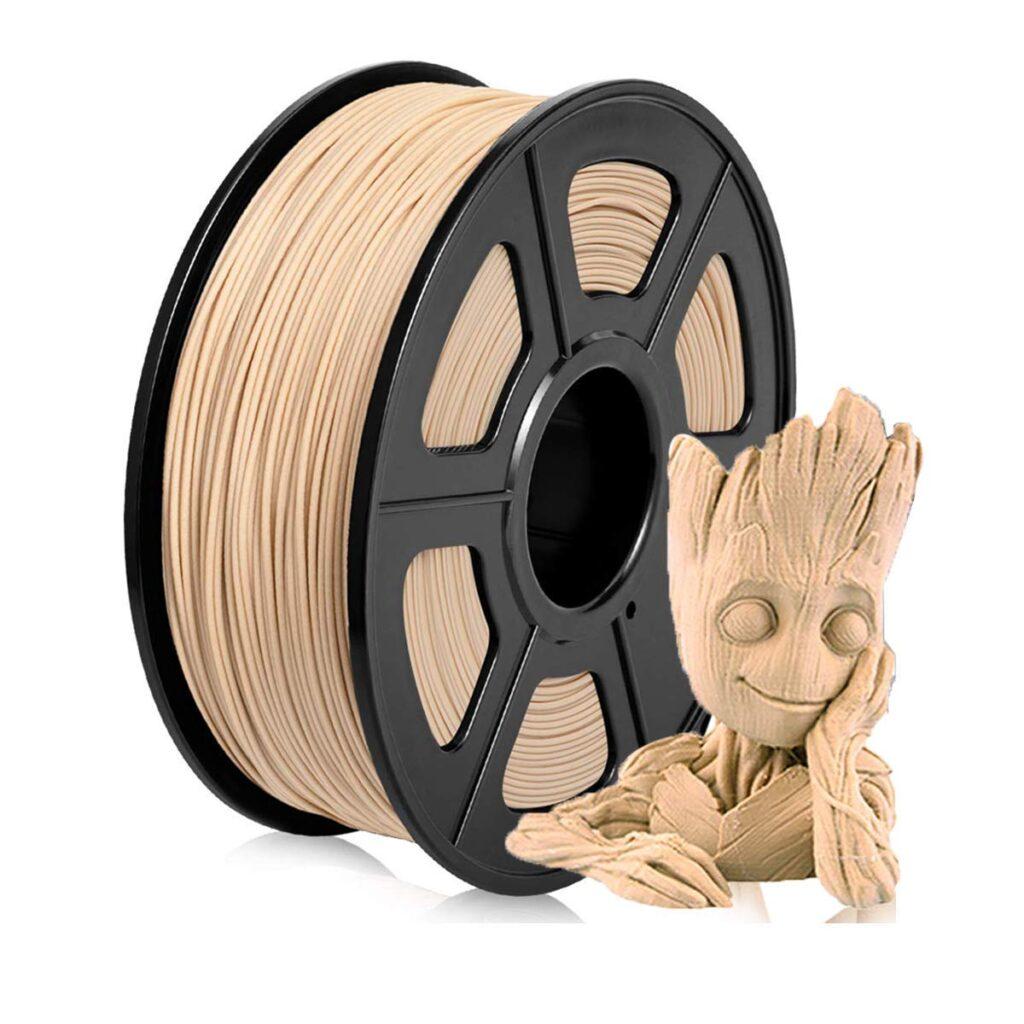
Comparison with other 3D printing materials
Wood filament holds a unique position among 3D printing materials, offering distinct advantages and limitations compared to more conventional options. Wood filament offers a natural texture and appearance, unlike PLA, ABS, and PETG. It’s ideal for specific applications. Wood particles blended with thermoplastic base materials create a slightly porous structure. This makes wood filament objects lighter and more forgiving to small printing errors.
However, the wood filament is not without its challenges. Wood filament is often more brittle than other materials. This can cause increased breakage during printing or in the final product. Printing with wood filament requires careful calibration of printer settings. Temperature and retraction settings need to be adjusted properly. Nozzle clogging or inconsistent extrusion can be common issues. Slower print speeds may be necessary when printing with wood filament. Layer adhesion can be weaker with some wood filaments.
Wood filament isn’t suitable for all projects but is great for creating organic-looking objects. It provides a natural wood-like appearance that’s authentic. This makes it an excellent choice for art, design, or home decor where sustainability and aesthetics are important.
Advantages and limitations of wood filament
Advantages of Wood Filament
- Aesthetics: Wood filament produces objects with a natural, wood-like appearance and texture, making it an ideal material for projects that require a rustic or organic look.
- Sustainability: By incorporating recycled wood materials and biodegradable polymer bases, wood filament is an eco-friendly choice for 3D printing enthusiasts looking to minimize their environmental impact.
- Unique finishes: Post-processing techniques like sanding, staining, and painting can enhance the wooden appearance of printed objects, allowing for a range of customized finishes.
- Lightweight: Wood filament prints are typically lighter than their counterparts made from solid thermoplastics due to the porous structure created by the wood particles.
- Pleasant aroma: The wood particles in the filament often emit a pleasant, natural smell during the printing process, which can enhance the overall experience.
Limitations of Wood Filament
- Brittleness: Wood filament can be more brittle than other 3D printing materials, increasing the risk of breakage during printing or in the final product.
- Printer settings: Printing with wood filament requires careful calibration of printer settings, including temperature, retraction, and print speed, which can be challenging for beginners.
- Nozzle clogging: The wood particles in the filament can cause nozzle clogging, especially with smaller nozzle diameters. Regular maintenance and cleaning of the nozzle are essential for successful printing.
- Weaker layer adhesion: The presence of wood particles can lead to weaker layer adhesion, affecting the structural integrity and durability of the final printed objects.
- Limited applications: Due to its structural limitations and aesthetic focus, the wood filament may not be suitable for all projects, especially those requiring high strength or precision.
Choosing the Right Wood Filament
To choose the right wood filament for your 3D printing project, consider several factors. This will ensure a successful and satisfying outcome. Here are some key aspects to keep in mind:
- Wood type: Wood filaments are available in various wood types, each imparting unique characteristics such as color, grain pattern, and smell. Common options include bamboo, birch, cedar, cherry, coconut, ebony, mahogany, maple, olive, pine, and walnut. Consider the desired appearance and properties of your final product when selecting a wood type.
- Brand reputation: Research and select a reputable wood filament brand with positive reviews and consistent quality. A reliable brand will ensure that your filament has been thoroughly tested, has uniform particle size, and offers consistent results.
- Filament diameter: Ensure that the wood filament diameter is compatible with your 3D printer. Most FDM printers use either 1.75mm or 2.85mm (3mm) diameter filaments, so check your printer’s specifications before making a purchase.
- Printability: Printing with wood filament can vary in difficulty. Factors like particle ratio, polymer base, and composition can affect printability. User reviews and recommendations can provide insights on which filament to choose. Look for a filament that suits your experience level and printer capabilities.
- Sustainability: If environmental considerations are a priority, opt for wood filaments made from recycled or sustainably sourced wood and biodegradable polymers. This will help minimize the ecological impact of your 3D printing projects.
Researching and selecting the right wood filament is key. It leads to a smoother printing experience. this process can improve the quality of your results. It can increase satisfaction with your 3D-printed creations.
Popular wood filament brands
Here is a list of some well-regarded wood filament brands:
- Hatchbox: Hatchbox is a widely recognized brand that offers a variety of high-quality filaments, including wood-infused options. Their wood PLA filament is known for its consistent quality and ease of use, making it a popular choice among 3D printing enthusiasts.
- ColorFabb: ColorFabb’s WoodFill is a blend of PLA and fine wood fibers, which produces prints with a realistic wood-like appearance. The company is known for its premium quality filaments and wide range of innovative materials.
- MG Chemicals: MG Chemicals offers a wood filament that combines PLA with wood particles, resulting in a material that prints easily and provides a natural wood finish. The brand has a reputation for producing high-quality filaments across various materials.
- Polymaker: Polymaker’s PolyWood is a unique wood filament designed to mimic the appearance of wood without the inclusion of actual wood particles. This makes it easier to print with, and it is less likely to cause nozzle clogging.
- Fillamentum: Fillamentum is known for its high-quality filaments, including the Timberfill line of wood filaments. Available in various wood types, such as pine, rosewood, and cork, Timberfill filaments deliver excellent print quality and a realistic wood finish.
Remember to research user reviews and consider the specific characteristics of each brand’s wood filament offerings to find the best fit for your 3D printing project. Note that the availability of these brands may vary depending on your location and the current market.
Different wood types and their characteristics
Wood filaments come in various wood types, each imparting unique characteristics such as color, grain pattern, and smell to the final printed object. Here’s a brief overview of some common wood types used in filaments and their distinguishing features:
- Bamboo: Bamboo filament produces a light, pale color and has a subtle grain pattern. It is an eco-friendly option due to the fast-growing nature of bamboo plants.
- Birch: Birch filament offers a pale, creamy color with subtle grain patterns. It is a popular choice for its light hue and even texture.
- Cedar: Cedar filament features a reddish-brown color and a straight, uniform grain pattern. It is known for its characteristic cedar aroma during the printing process.
- Cherry: Cherry filament provides a warm, reddish-brown hue with a fine, straight-grain pattern. The printed objects often darken over time, similar to natural cherry wood.
- Coconut: Coconut filament has a dark brown color with a coarse texture, resulting from the use of coconut shell particles. It provides a unique, tropical appearance and is an eco-friendly choice.
- Ebony: Ebony filament produces a rich, dark brown to black color, with a smooth and dense texture. It is ideal for projects requiring a dark, elegant finish.
Continuation
- Mahogany: Mahogany filament offers a reddish-brown hue with a straight to wavy grain pattern. It is popular for its durability and warm appearance.
- Maple: Maple filament features a light, creamy color with a subtle grain pattern. It is known for its smooth texture and even coloring, making it an attractive option for various applications.
- Olive: Olive filament has a light to medium brown color with a pronounced grain pattern. The printed objects often showcase the distinct, swirling grain pattern characteristic of natural olive wood.
- Pine: Pine filament comes in a light, yellowish-brown color with a prominent, straight grain pattern. It is a popular option for projects requiring a classic, rustic appearance.
- Walnut: Walnut filament offers a rich, dark brown color with a straight to wavy grain pattern. It is ideal for projects requiring a sophisticated, dark wood finish.
Keep in mind that the characteristics of wood filaments can vary depending on the brand and manufacturing process. It’s essential to test and experiment with different wood types to find the ideal match for your specific 3D printing project.
How to select the best wood filament for your project
Selecting the best wood filament for your project involves considering a range of factors to ensure the desired outcome. Here are some key aspects to take into account when choosing the right wood filament:
Desired appearance
Consider the wood type that best matches the color, grain pattern, and texture you want for your final printed object. Different wood types, such as cherry, walnut, or bamboo, will impart unique characteristics to the final product.
Project requirements
Assess the specific needs of your project. If you require a more durable and sturdy material, choose a wood filament with a higher percentage of thermoplastic base or opt for a denser wood type. For projects focusing on aesthetics, prioritize the wood type’s appearance and grain pattern.
Printer compatibility
Ensure the wood filament is compatible with your 3D printer’s specifications, such as filament diameter, nozzle size, and temperature capabilities. Some wood filaments may require specific printer settings or modifications to achieve optimal results.
Ease of printing
Wood filaments can vary in terms of printability, with some being more challenging to work with due to nozzle clogging or inconsistent extrusion. Read user reviews and recommendations to find a wood filament that suits your experience level and printer capabilities.
Sustainability
If environmental considerations are important to you, select a wood filament made from sustainably sourced or recycled wood materials and biodegradable polymers. This will help reduce the ecological impact of your project.
Brand reputation
Choose a reputable wood filament brand known for consistent quality and performance. Research reviews, user experiences, and community forums to find a reliable brand that suits your needs.
Post-processing options
Consider the ease of post-processing for your chosen wood filament. Some materials might be more receptive to sanding, staining, or painting, allowing you to achieve the desired finish and appearance more easily.
By carefully evaluating these factors and researching the available options, you can select the best wood filament for your project and ensure a successful and satisfying 3D printing experience.
3D Printing Tips and Techniques
When working with wood filament, implementing specific 3D printing tips and techniques can help ensure a successful outcome and minimize common issues. First, calibrate your printer settings, such as temperature, retraction, and print speed, to match the filament requirements. Since wood filaments are more susceptible to nozzle clogging, using a larger nozzle diameter and maintaining a clean nozzle is essential. Make sure to store your filament properly, keeping it dry and away from moisture to prevent degradation. Utilize a heated bed with an appropriate surface, like painter’s tape or BuildTak, to promote better adhesion and reduce warping. Finally, experiment with different layer heights and infill patterns to achieve the desired balance between aesthetics and strength. By following these tips and refining your techniques, you’ll be well-equipped to create stunning, wood-infused 3D prints.
Preparing your printer for wood filament
Preparing your 3D printer for wood filament involves fine-tuning various settings and making adjustments to ensure optimal printing performance. Start by ensuring your printer is clean and well-maintained, with special attention paid to the nozzle and extruder. As wood filament is more prone to clogging, using a larger nozzle diameter (e.g., 0.6mm or 0.8mm) is recommended to minimize this issue. Next, calibrate your printer settings such as extrusion temperature, bed temperature, and print speed, following the manufacturer’s guidelines or user recommendations for wood filament. Make adjustments to the retraction settings to minimize stringing and oozing. Additionally, apply an appropriate bed surface, such as blue painter’s tape, to improve adhesion during the printing process. Lastly, ensure proper filament storage, keeping it dry and protected from moisture to maintain its printability. By thoroughly preparing your printer for wood filament, you can achieve better results and minimize potential complications during the printing process.
Adjusting temperature, speed, and other settings
Adjusting the temperature, speed, and other settings for wood filament is crucial for achieving optimal print quality and minimizing issues. Start with the extrusion temperature, which typically ranges from 190°C to 230°C, depending on the filament brand and composition. You may need to experiment to find the ideal temperature for your specific wood filament. Bed temperature should be set between 50°C and 70°C, ensuring proper adhesion without excessive warping. Slower print speeds, often between 30mm/s and 60mm/s, can improve layer adhesion and minimize nozzle clogging.
Retraction settings should also be fine-tuned to reduce stringing but be cautious not to retract too quickly, as this may cause the filament to grind or jam. Increase the cooling fan speed for better bridging and overhang performance, but avoid excessive cooling that might compromise layer adhesion. By carefully adjusting these settings and monitoring the printing process, you can achieve high-quality, wood-infused 3D prints with minimal complications.
Tips for achieving optimal print quality and wood-like textures
To achieve optimal print quality and wood-like textures when using wood filament, follow these tips and techniques. First, experiment with varying layer heights, as thicker layers can enhance the wood grain effect and create a more pronounced texture. Conversely, thinner layers may produce a smoother, more polished appearance. Adjust the extrusion multiplier or flow rate to ensure proper material deposition, balancing between adequate adhesion and avoiding over-extrusion. You can also try printing at varying temperatures within the filament’s recommended range, as different temperatures can affect the color and texture of the final print. After printing, consider post-processing techniques such as sanding, staining, or painting to enhance the wood-like appearance and finish of your object. Finally, don’t hesitate to seek advice from the 3D printing community, where you can find valuable insights, recommendations, and troubleshooting tips to help you achieve the best possible results with wood filament.
Post-processing Techniques
Post-processing techniques play a significant role in enhancing the appearance and texture of wood-infused 3D prints. Start by sanding the printed object to smooth out layer lines and reveal the wood grain pattern. Begin with a coarse grit sandpaper, gradually working your way up to a finer grit for a polished finish. After sanding, you can apply wood stains or dyes to achieve the desired color and enhance the wood-like appearance of your print. Be sure to follow the stain manufacturer’s instructions, applying it evenly and allowing for proper drying times between coats.
Painting is another option, allowing you to create a unique look or mimic different wood types. Seal your finished object with a clear coat or varnish to protect it from wear and add a professional touch. For prints requiring assembly, use wood glue or other adhesives compatible with both wood and the thermoplastic base of the filament. By mastering these post-processing techniques, you can elevate the aesthetics and durability of your wood-infused 3D prints.
Sanding and polishing your wood-infused prints
Sanding and polishing are essential post-processing steps for wood-infused prints, as they help to smooth out layer lines, reveal wood grain patterns, and achieve a professional finish. Start by gently removing any support material or loose particles from your print. Then, begin sanding with coarse grit sandpaper (around 100-150 grit) to remove imperfections and smooth the surface. As you sand, follow the contours of your print and apply even pressure to maintain consistency. Once the initial sanding is complete, progress to finer grits (180-240 grit, then 320-400 grit) to refine the surface further and achieve a polished appearance.
After sanding, you can use a soft cloth or brush to remove any remaining dust. If desired, apply a polishing compound or wax to enhance the print’s shine and protect the surface. Buff the object with a clean cloth or a rotary tool equipped with a polishing wheel to achieve a smooth, lustrous finish. By carefully sanding and polishing your wood-infused prints, you can create impressive, professional-looking objects that showcase the unique characteristics of wood filament.
Staining and painting techniques for a realistic finish
Staining and painting techniques can significantly enhance the realistic finish of your wood-infused prints, adding depth, color, and visual appeal. For staining, choose a wood stain that complements the wood type of your filament. Begin by preparing the print’s surface through thorough sanding and cleaning. Apply the stain evenly using a brush, sponge, or cloth, following the wood grain pattern. Allow the stain to penetrate the surface for a few minutes before wiping away any excess with a clean cloth. You may apply multiple coats to achieve the desired color intensity, allowing ample drying time between coats as specified by the stain manufacturer.
For painting, start with a primer to ensure proper adhesion of the paint to the print’s surface. Choose acrylic or oil-based paints, depending on your preference and desired finish. Apply thin, even layers of paint with a brush or airbrush, allowing each layer to dry before applying the next. You can use multiple colors to mimic wood grain patterns or highlight specific areas of the print for added realism. After the paint has fully dried, apply a clear coat or varnish to seal and protect the painted surface. By utilizing staining and painting techniques, you can achieve a realistic finish that highlights the unique beauty of wood-infused 3D prints.
Sealing and protecting your wood filament creations
Your wood filament creations must be sealed and protected if you want to increase their toughness and lifetime. Applying a clear coat or varnish is one of the best ways to accomplish this. Pick a product that works with the kind of wood filament you used, then apply it as directed by the manufacturer. A clear coat will assist to seal the surface, shielding it from moisture, UV rays, and everyday wear and tear.
Also, it might aid in enhancing the color and pattern of the wood grain. Use a brush or spray to apply the clear coat in a well-ventilated location, and give each coat enough time to dry in between. To maintain and nurture the wood surface and give it a rich, natural appearance, you can also use wax- or oil-based treatments. To prevent harming your 3D-printed object, be sure to carefully read the instructions for each product. You may enjoy the beauty and durability of your wood filament creations for many years to come by sealing and safeguarding them.
Creative Project Ideas and Inspirations
There are endless creative project ideas and inspirations that you can explore when working with wood filament. Here are a few examples to get you started:
- Customized phone cases: Design and print a unique phone case with a wood filament, featuring personalized engravings, textures, or patterns.
- Desk accessories: Create a set of matching desk accessories, such as a pen holder, paperclip tray, or business card holder, with different wood filament types for a natural, rustic look.
- Jewelry: Utilize wood filament to make statement pieces of jewelry, like earrings, necklaces, or bracelets. Sand and polish the pieces for a refined, polished finish.
- Decorative objects: Print decorative objects, such as vases, sculptures, or figurines, with wood filament to add a warm, natural touch to your home decor.
- Game pieces: Print customized game pieces, such as chess or checkers, with different wood filament types to add variety and visual interest to your game.
- Architectural models: Use wood filament to create detailed architectural models of buildings, landmarks, or bridges, highlighting the unique characteristics of each wood type.
- Artistic installations: Use wood filament to create intricate, large-scale artistic installations, showcasing the material’s versatility and natural beauty.
These are just a few of the many project ideas you can explore with wood filament, each offering unique possibilities for creativity and self-expression.
Showcase of wood filament 3D printed objects
A showcase of wood filament 3D printed objects can provide inspiration and insight into the incredible range of possibilities offered by this material. From functional objects to artistic creations, the showcase can include a diverse array of objects made using different wood filament types and techniques. For example, it can feature intricately designed jewelry pieces, like earrings, pendants, or bracelets, showcasing the material’s natural texture and color. It can also showcase larger objects, such as furniture, home decor, or architectural models, highlighting the durability and versatility of wood filament. The showcase can also include unique objects, like phone cases, game pieces, or musical instruments, demonstrating the limitless potential for creativity and innovation when working with wood filament. A wood filament 3D printed objects showcase can inspire makers and artists to experiment with new techniques and designs, as well as encourage the exploration of sustainable and eco-friendly 3D printing materials.
Combining wood filament with other materials
Combining wood filament with other materials can add new dimensions to your 3D printing projects, providing enhanced functionality, durability, and visual appeal. For example, you can combine wood filament with metal filaments, like copper or brass, to create striking jewelry pieces or architectural models that showcase the contrast between natural wood and metallic shine. You can also incorporate other natural materials, like stone or shell, into your wood filament prints, adding depth and texture to the final product.
Another option is to use wood filament as an accent or detail in larger prints made from other materials, such as using wood filament for handles or trim on a plastic or metal object. These combinations can create a unique, hybrid aesthetic that showcases the best qualities of each material, while also providing a range of practical benefits, such as improved strength or better heat dissipation. By combining wood filament with other materials, you can unlock new levels of creativity and versatility in your 3D printing projects.
Ideas for home decor, art, and functional items
Wood filament offers a range of possibilities for creating home decor, art, and functional items that showcase the natural beauty and warmth of wood. For home decor, you can 3D print vases, picture frames, or lamps with different wood filament types, creating a cozy and inviting atmosphere in your living space.
Additionally, using wood filament for furniture components, such as table legs or chair backs, can add a touch of rustic charm to your decor. In terms of art, wood filament can be used to create sculptures, wall hangings, or 3D prints that highlight the unique texture and color of the material. For functional items, you can print kitchen utensils, like cutting boards or rolling pins, with food-safe wood filament, as well as planters, coasters, or other items that add a natural touch to your everyday life. The options for using wood filament in home decor, art, and functional items are endless, allowing for both practicality and creativity to be combined in unique ways.
Troubleshooting Common Issues
Despite its many benefits, wood filament can present some common issues that may affect the quality of your 3D prints. One of the most common problems is nozzle clogging due to the wood particles in the filament. To avoid this, make sure to use a larger nozzle size, maintain a consistent temperature, and clean the nozzle regularly. Another issue is warping or cracking, which can occur when printing at high temperatures or without proper bed adhesion. To prevent this, adjust the bed temperature and make sure the filament is adhering well to the bed by using the proper bed surface and leveling the bed.
Additionally, the wood filament can be more prone to stringing and oozing, which can be minimized by adjusting retraction settings, print speed, and cooling fan speed. Lastly, filament storage can impact print quality, as wood filament can absorb moisture from the air, causing it to become brittle and difficult to print. Store your wood filament in a dry, airtight container to prevent moisture absorption. By understanding these common issues and troubleshooting them effectively, you can achieve high-quality, wood-infused 3D prints.
Addressing wood filament clogging and extrusion problems
Wood filament clogging and extrusion problems can be frustrating, but there are several solutions to address them. One of the most effective ways to prevent clogging is to use a larger nozzle size, which can allow wood particles to pass through more easily. Additionally, cleaning the nozzle regularly with a cleaning filament or a needle can remove any blockages and keep the extrusion path clear. Another solution is to adjust the temperature and retraction settings, finding the ideal balance between extrusion and retraction to avoid excessive pressure and nozzle jams.
You can also experiment with different print speeds and cooling fan speeds, which can help to minimize clogging and improve overall print quality. If these solutions don’t work, try changing to a different brand or composition of wood filament, as different filaments may require slightly different printing settings. By addressing wood filament clogging and extrusion problems promptly and systematically, you can enjoy the benefits of this unique material without sacrificing print quality or efficiency.
Tips for dealing with warping and layer adhesion issues
Warping and layer adhesion issues are common challenges when working with wood filament, but there are several tips to help address them. One solution is to adjust the bed temperature, which can help to improve adhesion between the first layer and the bed. Also, make sure to use a proper bed surface, such as a glass plate or build tack, to provide a solid base for your print. Leveling the bed is also crucial to ensure even layer adhesion across the print surface. Additionally, consider using a brim or a raft, which can increase the contact area between the object and the bed and improve adhesion.
Another option is to reduce the printing speed, especially for the first layer, to give the material time to adhere to the bed. Additionally, consider using a heated chamber, which can help to maintain a consistent temperature throughout the print and reduce warping caused by cooling. Finally, if you’re experiencing layer adhesion issues, consider adjusting the extrusion temperature or increasing the extrusion multiplier to provide better material flow and bonding between layers. By implementing these tips, you can achieve better layer adhesion and reduce warping, resulting in high-quality, functional 3D prints with wood filament.
Solutions for improving print strength and durability
While being renowned for its warmth and natural beauty, the wood filament can be difficult to print with and maintain over time. But, there are several ways to strengthen and make your wood filament printing last longer. Using a larger nozzle size is one possibility, which can enable thicker layers and greater adhesion between layers. Increasing the quantity of material inside the print and enhancing its general strength is another option, which involves printing with a larger infill percentage.
To further strengthen and rigidify your print, think about incorporating a reinforcing material like fiberglass, carbon fiber, or Kevlar. You can also experiment with other printing orientations or layer heights, which can have an impact on the finished object’s strength and longevity. Finally, by smoothing out the surface and adding a protective layer, post-processing processes like sanding and sealing can assist to increase the print’s strength and longevity. By using these methods, you may produce wood filament prints that are stronger and more resilient, can endure regular usage, and will last for years.
The Future of Wood Filament and Eco-friendly 3D Printing
As more makers and manufacturers look for sustainable and eco-friendly materials to lessen their carbon footprint and encourage environmental responsibility, the future of wood filament and environmentally friendly 3D printing is promising. For makers and artists who care about the environment, wood filament offers a special blend of natural beauty, toughness, and biodegradability. The creation of new bio-based materials and recycled filaments, among other developments in 3D printing technology, is opening up even more possibilities for environmentally responsible 3D printing. Future developments and applications of eco-friendly 3D printing materials, such as wood filament, are projected to increase as sustainability gains importance in our society. With these developments, we can anticipate a 3D printing methodology that is both environmentally friendly and more sustainably and responsibly oriented.
Developments in wood filament technology
The possibilities for 3D printing with wood have increased as a result of recent advancements in wood filament technology. The introduction of wood composite filaments, which blend wood particles with other materials like PLA or ABS to make a more robust and simple-to-print material, is a significant development. The usage of reclaimed wood products is another innovation that offers a more environmentally friendly and sustainable choice for wood filament. A larger variety of colors, textures, and qualities are now available thanks to the introduction of additional wood filament types created from several wood species.
Moreover, improvements in post-processing methods, including polishing and staining, can improve the inherent beauty of wood filament prints. We may anticipate even more advancements in wood filament technology as technology progresses, including higher print strength, sustainability, and compatibility with a wider range of 3D printers. These innovations will provide makers and artists new chances to use wood filament to produce attractive, long-lasting, and environmentally responsible 3D printed products.
New wood-based materials and composites
Novel composites and materials based on wood are becoming an intriguing area of 3D printing innovation. Although retaining the organic appearance and feel of wood, these materials offer special qualities including greater flexibility and durability. For instance, wood-based composites that blend wood particles with additional natural fibers like bamboo or hemp can provide enhanced strength and printability while simultaneously lowering the environmental effect of conventional plastic filaments.
Moreover, products with a natural wood-like feel and look can be made using wood-infused materials, such as wood-plastic composites, while yet maintaining the strength and durability required for useful items. The advancement of these new wood-based materials and composites is propelling the development of environmentally friendly and sustainable 3D printing, giving makers and artists additional possibilities for producing products that are appealing, useful, and responsible. We may anticipate even more fascinating applications and advances in wood-based 3D printing as these materials continue to advance.
The potential impact of wood filament on sustainability and the environment
The potential impact of wood filament on sustainability and the environment is significant. This filament offers a sustainable and eco-friendly alternative to traditional plastics, which are known to be harmful to the environment due to their long decomposition time and the production of greenhouse gases. Wood filament, on the other hand, is made from renewable resources, and it is biodegradable, meaning it will not harm the environment once discarded.
Additionally, wood filament promotes the use of wood waste materials that would otherwise end up in landfills, reducing waste and promoting circular economy principles. By using This filament, makers and manufacturers can reduce their environmental footprint and contribute to a more sustainable future. Furthermore, the use of wood filament can help raise awareness of sustainable materials and encourage a shift towards more responsible and environmentally friendly manufacturing practices. As more and more people become aware of the potential impact of This filament on sustainability and the environment, we can expect to see wider adoption of this eco-friendly 3D printing material and its use in a variety of applications.
Conclusion
In conclusion, wood filament offers a unique and exciting opportunity for makers and artists to explore the natural beauty and warmth of wood in their 3D printing projects. With a range of wood types, composite materials, and post-processing techniques available, wood filament provides endless possibilities for creating stunning, sustainable, and eco-friendly objects. While there are some challenges associated with using wood filaments, such as clogging, warping, and layer adhesion, these can be addressed through careful adjustments to printing settings, post-processing techniques, and troubleshooting methods.
As advancements in wood filament technology continue to emerge, including new materials and composites, we can expect to see even more opportunities for sustainable and responsible 3D printing. Ultimately, the potential impact of wood filament on sustainability and the environment is significant, offering a path towards more eco-friendly manufacturing practices and a more sustainable future.
Recap of the benefits of wood filament 3D printing
To recap, there are several benefits to using wood filament for 3D printing, including:
- Natural beauty: Wood filament offers a unique and natural appearance, adding warmth and character to 3D-printed objects.
- Sustainability: Wood filament is made from renewable resources, reducing the environmental impact of traditional plastics.
- Biodegradability: Wood filament is biodegradable, meaning it will not harm the environment once discarded.
- Durability: With proper printing settings and post-processing techniques, wood filament prints can be durable and long-lasting.
- Versatility: Wood filament can be used to create a variety of objects, including functional items, art, and home decor.
- Innovation: The development of new wood-based materials and composites is driving innovation in eco-friendly and sustainable 3D printing.
By taking advantage of these benefits, makers, and artists can create stunning, sustainable, and eco-friendly objects that are both beautiful and functional.
Encouragement to experiment with wood filament projects
We urge you to give wood filament a try if you haven’t already. This filament offers countless opportunities for producing beautiful and environmentally responsible things due to its distinct natural appearance, sustainability, and adaptability. To acquire the desired texture and quality for your prints, don’t be afraid to experiment with various wood types, composite materials, and post-processing procedures. You can make useful things, gorgeous works of art, and sustainable home decor with a little perseverance and imagination. Now turn on your 3D printer and let the innate beauty of wood filament inspire your creativity.
A call to embrace eco-friendly materials and practices in the 3D printing community
We must give eco-friendly procedures and materials top priority as the 3D printing sector expands and changes. We can lessen our impact on the environment and encourage ethical production methods by choosing sustainable materials like wood filament. To further lessen our impact on the environment, we can investigate new developments in eco-friendly 3D printing, such as recycled filaments and bio-based materials. We can influence change in the direction of a more sustainable future as members of the 3D printing community. Let’s adopt environmentally friendly procedures and materials in our 3D printing projects and accept responsibility for our impact on the environment. Together, we can have a positive influence and create a more sustainable future for future generations as well as for ourselves.
8 Steps to Successful Wood Filament 3D Printing
Time needed: 3 hours
This “how-to” section outlines 8 key steps for successfully 3D printing with wood filament, including selecting the right filament, adjusting printing settings, preparing the print surface, using infill, post-processing techniques, staining or painting, sealing and protecting, and experimentation. By following these steps, you can achieve beautiful and durable 3D prints with the natural beauty of wood filament.
- Choose the right filament
Select a wood filament that is compatible with your 3D printer and the type of project you want to create. Consider the wood type, particle size, and composite materials.
- Adjust printing settings
Adjust your printer settings, such as temperature, speed, and retraction, to achieve optimal print quality and avoid clogging or warping.
- Prepare the print surface
Use a proper bed surface and level the bed to ensure even layer adhesion across the print surface.
- Print with infill
Print with a higher infill percentage to increase the strength and durability of your print.
- Post-processing
Sand and polish your print to smooth out any rough edges or uneven surfaces.
- Stain or paint
Apply a wood stain or paint to enhance the natural beauty of your print.
- Seal and protect
Apply a sealant or coating to protect your print from moisture and wear and tear.
- Experiment
Don’t be afraid to experiment with different wood types, composite materials, and post-processing techniques to achieve the desired texture and finish for your prints.
FAQs
Wood filament is typically made of a combination of wood particles and a thermoplastic material, such as PLA or ABS.
Yes, wood filament is an eco-friendly 3D printing material, as it is made from renewable resources and is biodegradable.
The advantages of using wood filament include its natural beauty, sustainability, biodegradability, durability, versatility, and innovation.
Some common issues when printing with wood filament include clogging, warping, and layer adhesion. However, these issues can be addressed through proper printing settings, post-processing techniques, and troubleshooting methods.
Yes, wood filament can be used for functional items, such as phone cases, kitchen utensils, and even furniture, with proper printing settings and post-processing techniques.

